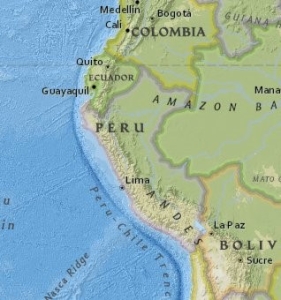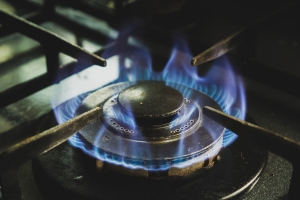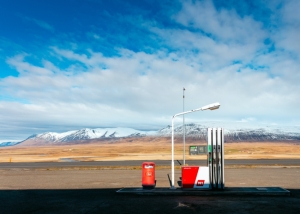Peru – A Growing Energy Market – Part One
We continue our series reviewing other countries in the Western Hemisphere, by looking at the South American country of Peru. In this two-part post, we explore this country’s resources and growing energy usage to see how this connects them to the global LPG markets.
Location and Natural Resources
Peru is a country located in western South America. With a population of 34 million, Peru is the fourth largest South American country by population and the third largest in land area. It is rich in hydrocarbons, with reserves of oil, natural gas, mineral mines (copper, silver and others) and coal.
Oil Reserves and Production
Oil Reserves
Peru is the seventh largest holder of crude oil reserves in Central and South America, with 859 million barrels of estimated proven reserves, as of June 2021. Much of Peru’s proven oil reserves are located off the coast of the Amazon region.
Reserves Close to Protected Environments
The proximity of these deposits to protected environments and delicately balanced ecosystems makes exploration and retrieval expensive. These reserves may only be accessed by strictly adhering to environmental protection guidelines.
Declining Oil Production
Crude oil production in Peru has been declining since the mid-1990s. However, the country’s total liquid fuel production has been boosted by increased natural gas liquids (NGL) production. As a result, the total oil production reported in 2020 was 128 Mbbls. Production comes from these two production fields Talara – Tumbes (57%) and Marañón – Ucayali (47%).
Natural Gas Reserves and Production
Natural Gas Reserves
Peru has the fourth largest gas reserves in Central and South America, with 14 trillion cubic feet (Tcf) of proven gas reserves as of 2017. The country has steadily increased its production of natural gas liquids (NGL), although it imports crude oil and refined products to meet local demand.
A Growing LPG Industry
Government Incentives to Increase LPG Use in Cooking
The LPG industry in Peru began in the 1930s. By the year 2000 the cooking fuel market showed 34% of the population were using kerosene or solid fuels without a chimney. The World Health Organization (WHO) referenced this situation in a report which estimated around 1,500 deaths were due to the use of these dirty fuels. Taking this into account, the Peruvian government, through the Ministry of Energy and Mining (MINEM), launched the National Family Kitchen (Cocina Peru). This program aims to convert one million families from using firewood or kerosene for cooking to LPG.
Growing Demand for LPG Use in Autogas
Another important area of growth in LPG demand is the use of Autogas. The demand for Autogas has been increasing in recent years. Currently, there are more than 650,000 LPG-powered vehicles in Peru.
Autogas represents a widespread alternative fuel in Peru. Facilities and filling stations are massively distributed throughout the country, allowing users to access the fuel easily in many areas. This is a strategic move designed to create an economical and viable alternative fuel for commercial and private use vehicles.
Peru’s Growing Energy Market
Peru has the 7th largest oil reserves and the 4th largest natural gas reserves in Central and South America. The location of these reserves makes extracting the deposits challenging due to environmental protection guidelines.
Additionally, though Peru has been steadily increasing its production of natural gas liquids, it has faced declining oil production since the mid-1990s and depends on imports of both crude oil and refined products to meet local demand.
Despite these factors, Peru’s LPG industry is growing with government incentives to increase LPG use in cooking and the country’s strategic investment in and promotion of Autogas for both commercial and private use vehicles. This growth could impact the global propane markets in the coming years and is the reason Twin Feathers is observing these changes with interest. Watch for the second part of our Peru post where we look more deeply at Peru’s growing demand for LPG. What that will mean for the country’s production, imports, and what all of that could mean for the global markets.
Peru – A Growing Energy Market – Part One
By Gabriel Amundarain







